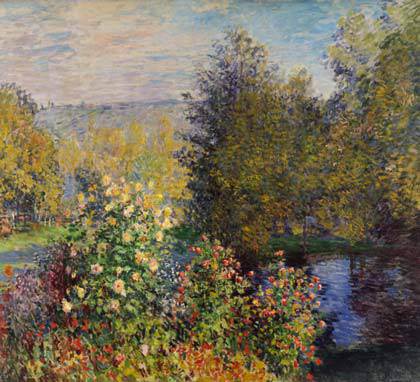
Claude Monet (1840–1926)
Corner of a Garden at Montgeron [Un coin de jardin à Montgeron], 1876.
Oil on canvas, 175 x 194 cm
© State Hermitage Museum, St Petersburg
Impressionism: Sensation & Inspiration in Amsterdam From 16 June 2012 to 13 January 2013, the Hermitage Amsterdam presents the world-famous Impressionist paintings from the vast collection of the State Hermitage Museum in St. Petersburg, in their artistic context.]]>
Source: Hermitage Amsterdam
Masterpieces by pioneers like Claude Monet, Pierre-Auguste Renoir, Alfred Sisley, and Camille Pissarro are accompanied by the work of other influential French painters from the second half of the nineteenth century, such as Eugène Delacroix and Jean-Léon Gérôme.
The exhibition focuses on contrasts between artistic movements. For instance, visitors will see and experience the sensational quality of Impressionism, the movement that heralded a new age. All the paintings, drawings, and sculptures come from the collection of the St. Petersburg Hermitage. Seldom has such a rich survey of this period been on display in the Netherlands.
Sensation
Impressionism derives its name from Monet’s painting Impression, soleil levant (1872); the name was first used mockingly by a journalist, but was soon adopted as a badge of pride. These artists rendered their fleeting impressions in vibrant colours for the pure pleasure of painting. They had no use for lofty ideas and worked in the open air under ever-changing light.
Inspiration
Impressionism began as a response to the classicism of the Paris Salon, an annual exhibition of officially selected art. The exponents of this style painted precisely as artists were expected to paint: carefully staged scenes with crisp outlines and an eye for detail. The most prominent artists in the neo-classicist tradition were Alexandre Cabanel and Jean-Léon Gérôme
Related content
Paths to Impressionism: French and American Landscape Paintings at the Newark Art Museum (exhibition, 2008-2009)
Follow us on:

